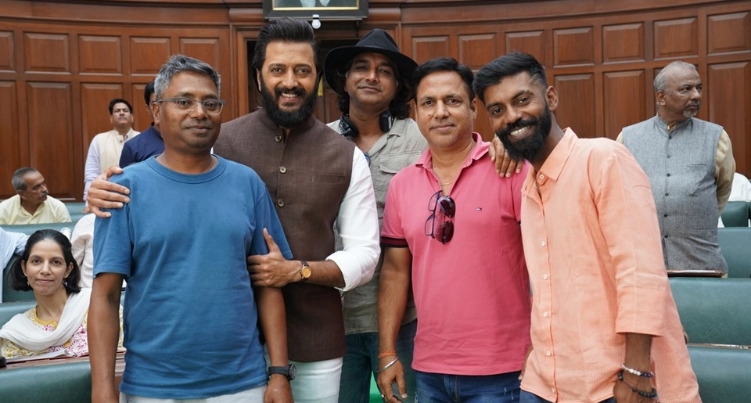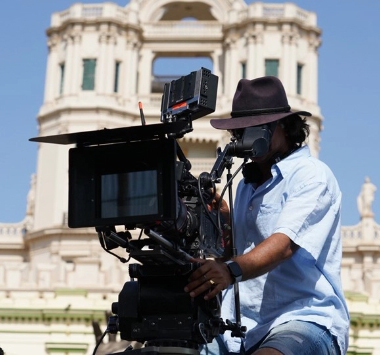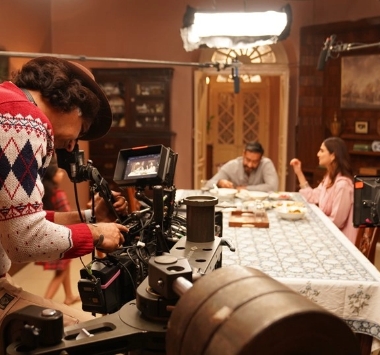


SONY VENICE ON “RAID 2”
In “Raid 2”, he paired the VENICE with vintage Cooke Anamorphic lenses to balance grandeur and authenticity. For “Dhamaal 4”, Chaudhary’s vibrant visuals, enhanced by the VENICE and Rialto system, alongside Ajay Devgn’s guidance, solidify his reputation as a visionary in Indian cinema.
In an exclusive chat, veteran cinematographer Sudhir K. Chaudhary speaks about his work on “Raid 2” and his experience using Sony Venice for the film.

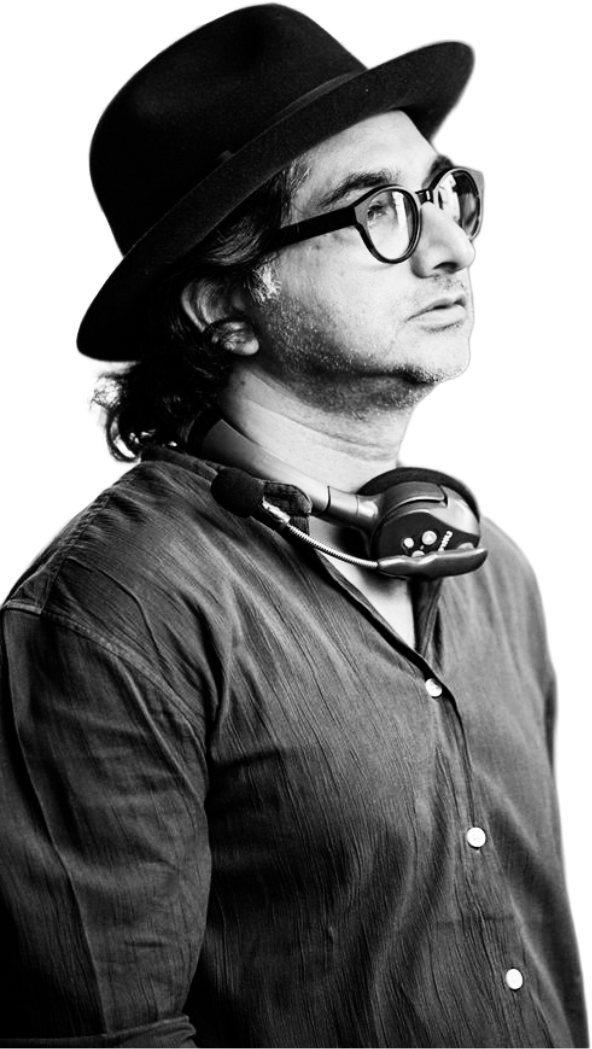


CINEMATIC VISIONARY
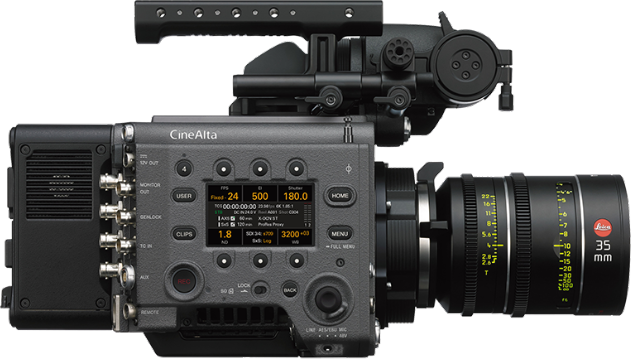
Sudhir K. Chaudhary, a distinguished cinematographer based in New Delhi and Mumbai, has built an impressive filmography over his 15-year career, renowned for crafting visually compelling narratives. A gold medalist in Motion Picture Photography from the MGR Government Film and TV Institute in Tamil Nadu, he began his career with the 2009 Tamil comedy film “Thiru Thiru Thuru Thuru”. His Bollywood credits include “Shershaah” (2021), “Drishyam 2” (2022), “Blurr” (2022), Raid (2018), “Raid 2” (2025), “De De Pyaar De 2” (2025), and “Dhamaal 4” (2025).
Chaudhary has collaborated with acclaimed filmmakers such as Rajkumar Gupta on “Raid” and “Raid 2”, Vishnuvardhan on “Shershaah”, and Indra Kumar on “Dhamaal 4”, with Ajay Devgn providing creative guidance as a lead actor in the latter. His early work as an assistant cinematographer under the legendary Ashok Mehta shaped his technical expertise. Chaudhary’s milestones include winning the Cinematography Art Award for Best Cinematography in 2023 for “Blurr”, lauded for its evocative night sequences. His work on “Shershaah” earned critical acclaim for capturing the emotional intensity of war, while “Drishyam 2” showcased his mastery of suspenseful lighting. Currently, “Dhamaal 4” highlights his versatility with vibrant, colorful visuals, solidifying his reputation as a visionary in Indian cinema.
What was your initial reaction after reading the script for “Raid 2”?
I was excited and surprised by the scale. Raid was a grounded, well-received film, and I was expecting something similar. But when Raj (Director – Raj Kumar Gupta) shared the story, it was clear that Raid 2 would be bigger and more ambitious. His challenge was to maintain the original’s authenticity while elevating the spectacle. That stayed with me throughout the shoot.

My goal was to blend genuineness with scale, making sure the film retained its soul. A big part of that balance came from the lighting design. I used dramatic, harsh lighting for Riteish Deshmukh to heighten his larger-than-life presence, and softer tones for Ajay Devgn to reflect honesty and substance. This contrast guided much of our visual storytelling.
What influenced your equipment choices for this film?
I was very conscious of not letting new-age technology make the film feel too polished or sterile, something that can easily happen with modern lenses. To retain a sense of texture and cinematic grit, I opted for a set of vintage anamorphic lenses that brought a distinct character to the visuals. I sourced this rare set from London, and paired it with a 4K workflow—so while the image had richness and detail, it still felt organic and lived-in.
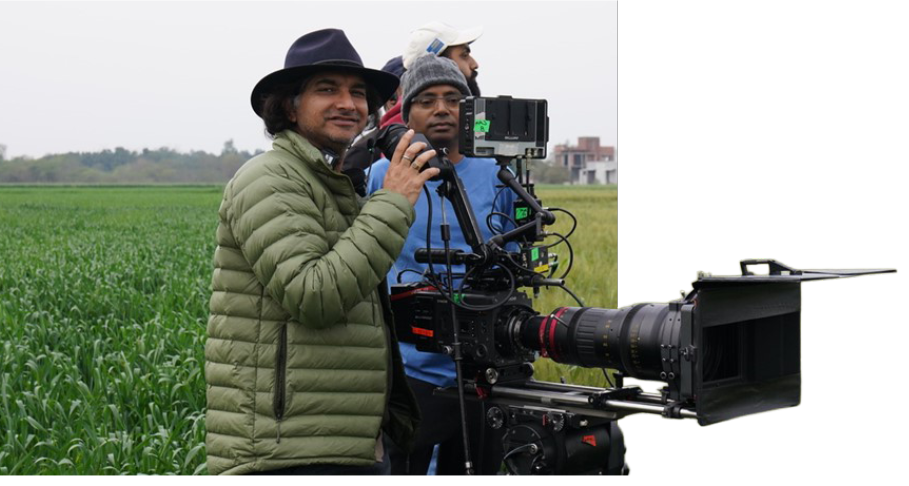
 The camera’s dynamic range is exceptional, allowing us to prioritize shadows or highlights by tweaking the ISO… Even when we filmed without major fill light in direct sun, VENICE captured enough detail for post-production flexibility.
The camera’s dynamic range is exceptional, allowing us to prioritize shadows or highlights by tweaking the ISO… Even when we filmed without major fill light in direct sun, VENICE captured enough detail for post-production flexibility. 
To further build on the period atmosphere, we developed a custom LUT that became the backbone of the film’s visual identity. It subtly warmed the highlights, deepened the shadows, and introduced a tobacco hue to echo the era. We fine-tuned this LUT throughout the shoot, adjusting for day and night scenes, making it an integral part of the storytelling.
How did the Sony VENICE camera help you navigate the challenges faced while shooting this film?
I chose the Sony VENICE along with FX3 largely for its ability to display an image on the monitor that closely resembled the final look, which ensured that director Raj Kumar Gupta and I stayed on the same page throughout the shoot. I needed precise control over LUTs and the flexibility to adjust them quickly, and the VENICE allowed me to make those changes seamlessly to achieve the desired look. I’ve always appreciated the in-camera ND filters, which let us adjust depth of field without pausing production. With the VENICE, we could shift from f/16 to f/2.8 instantly, keeping the shoot moving smoothly.
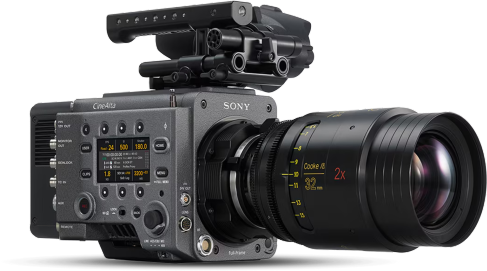
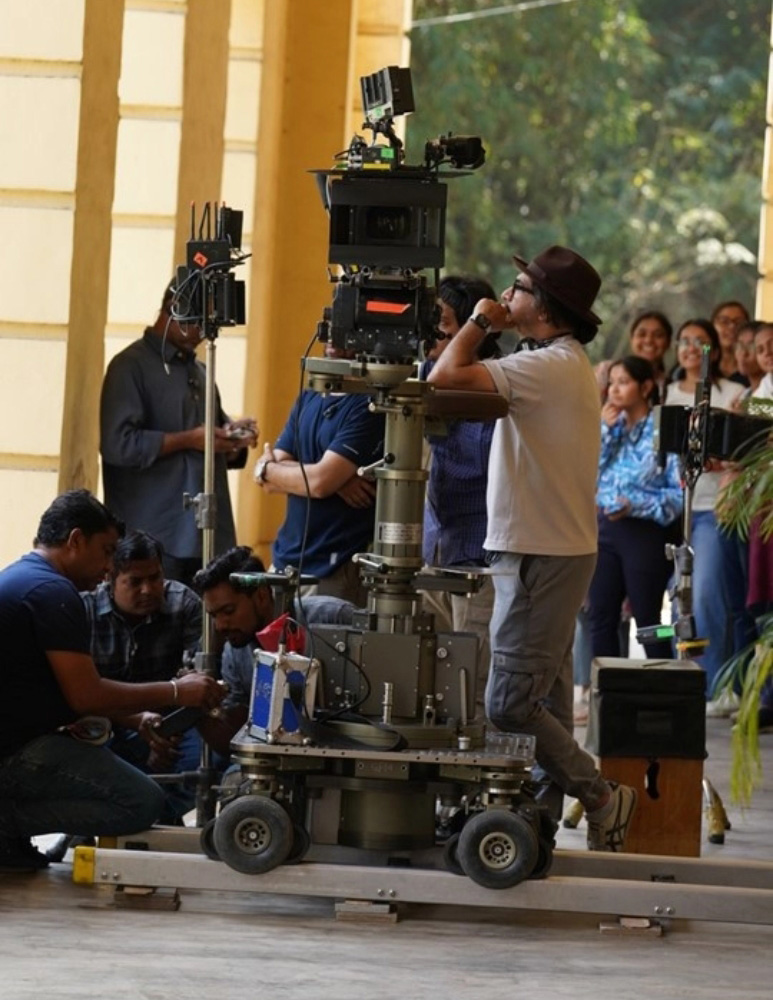
 When I first read the script for “Raid 2”, I was thrilled yet surprised by its vastly expanded scope… Striking this balance between spectacle and realism became our guiding principle throughout the production.
When I first read the script for “Raid 2”, I was thrilled yet surprised by its vastly expanded scope… Striking this balance between spectacle and realism became our guiding principle throughout the production. 
The camera’s dynamic range is exceptional, allowing us to prioritize shadows or highlights by tweaking the ISO.
For most outdoor scenes, I shot at 1000 ISO to gain more latitude in the highlights, especially since our frames featured a lot of whites under harsh sunlight, from costumes and Ambassador cars to the dunes of Rajasthan. Even when we filmed without major fill light in direct sun, the VENICE captured enough detail for post-production flexibility. The sensor on this camera simply delivers.
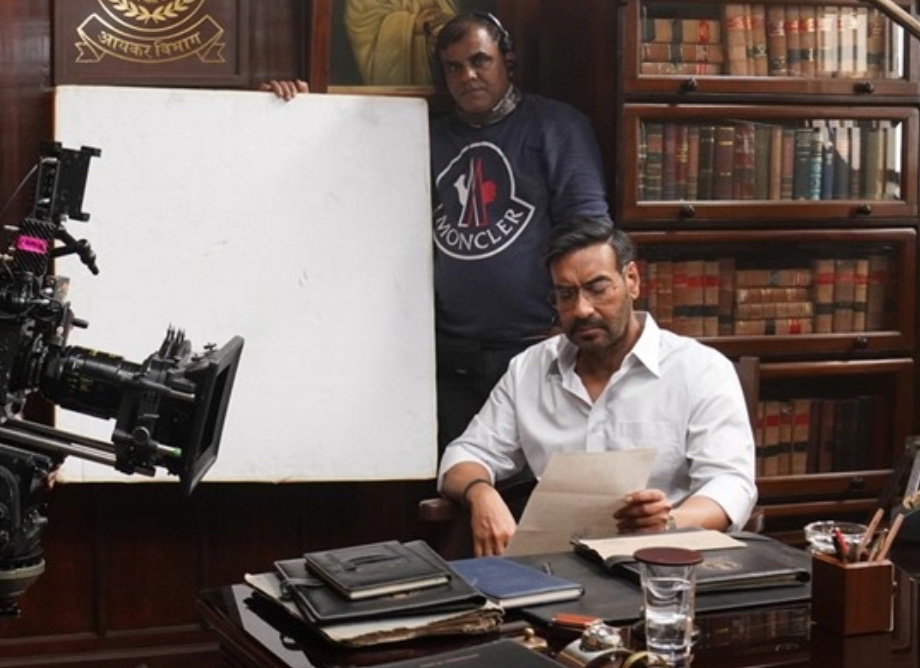

If you used supporting gear such as the VENICE Extension, what kind of creative freedom did it enable on set?Sony VENICE
The VENICE Extension System is an incredible tool to have in your arsenal. It makes handheld shooting effortless, even for extended periods. It also allowed me to manoeuvre into tight corners where the VENICE Camera Body wouldn’t fit. On “Raid 2”, certain sequences required shooting from the waist, which would have been challenging without the VENICE Extension System. We also moved through crowds unnoticed, with the VENICE Extension System discreetly positioned, sometimes hidden behind a head or turban, like guerrilla filmmaking in the truest sense. This flexibility lets us capture dynamic shots seamlessly, enhancing the creative freedom of the system significantly.
How does using the Sony VENICE alongside FX-series cameras (like FX6 or FX3) enhance on-set flexibility?
For scenes where the VENICE Extension System wasn’t practical, I used the FX3 with a RAW recorder mounted on a gimbal, making it a versatile fourth camera for sequences with large crowds. At times, it even doubled as an alternative to a BCAM. When watching the film, it’s nearly impossible to distinguish between the VENICE and FX3 footage. I had previously shot sequences of “Blurr” and “Drishyam 2” on FX3, but those were night sequences.
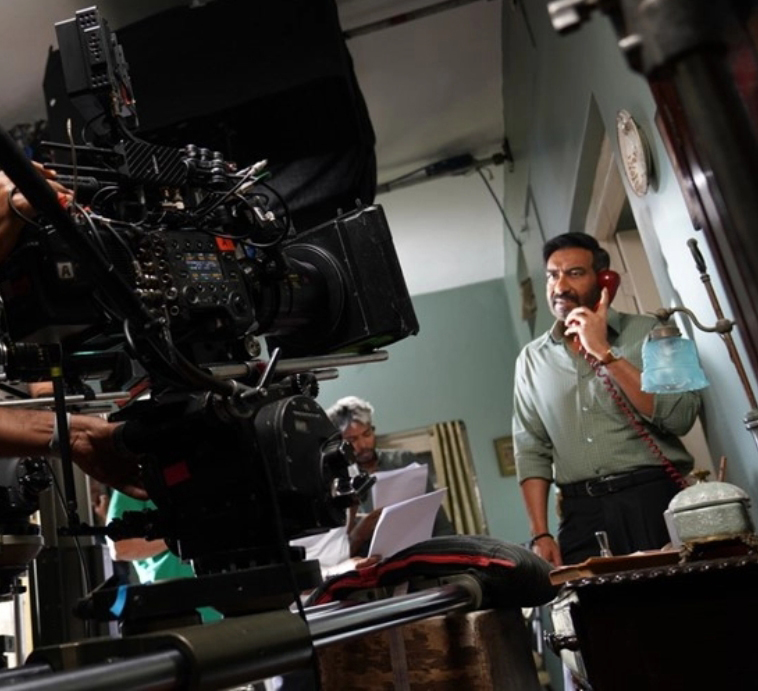
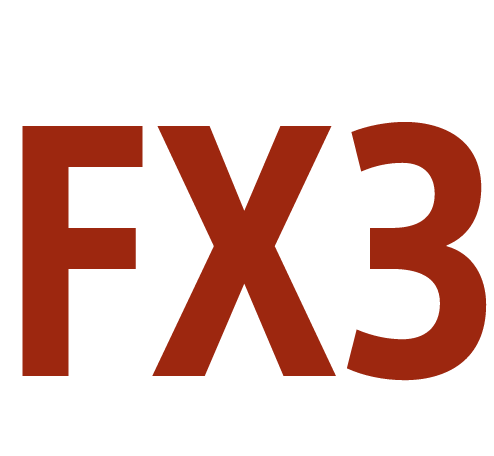
For “Raid 2”, I used the FX3 in bright, sunny daytime scenes and was thrilled with how seamlessly its results matched the VENICE. The sugarcane field sequence is a perfect example of this synergy, with roughly half the shots captured on the VENICE and the other half on the FX3, blending beautifully to showcase the cameras’ capabilities.

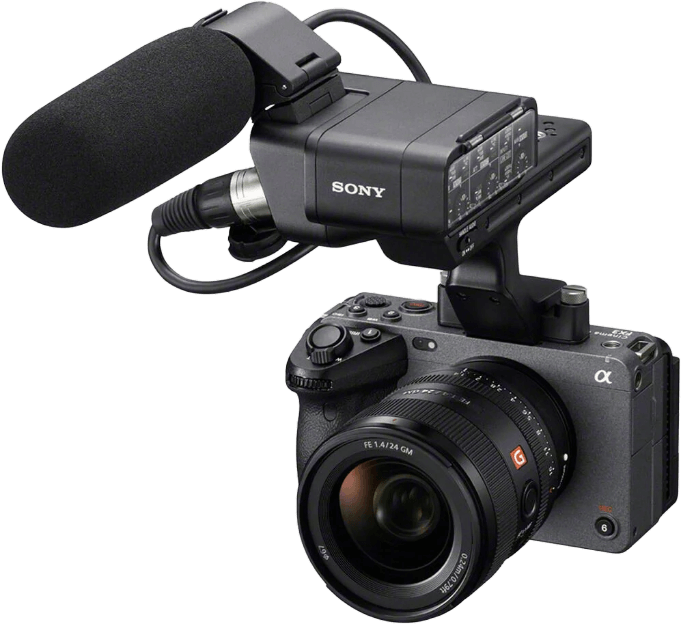

Any upcoming projects you’re excited about?
I just wrapped De De Pyaar De 2 and am currently filming Dhamaal 4, which is rich in VFX and CG elements. It’s a fun and vibrant change of pace after working on intense thrillers. We just completed some fantastic sequences with an incredible cast, and I’m genuinely excited to see it all come together. My trusted Sony VENICE and VENICE Extension System are my go-to kit for this project. We recently shot a high-energy sequence in Malshej Ghat using six VENICE cameras and two Extension Systems. What was originally estimated would take nine to twelve days was completed in just four and a half. Thanks to meticulous planning with a clear vision and the expert guidance of Ajay Devgn. Working on a project like this is always a rewarding experience, and I’m truly enjoying every moment on set.
